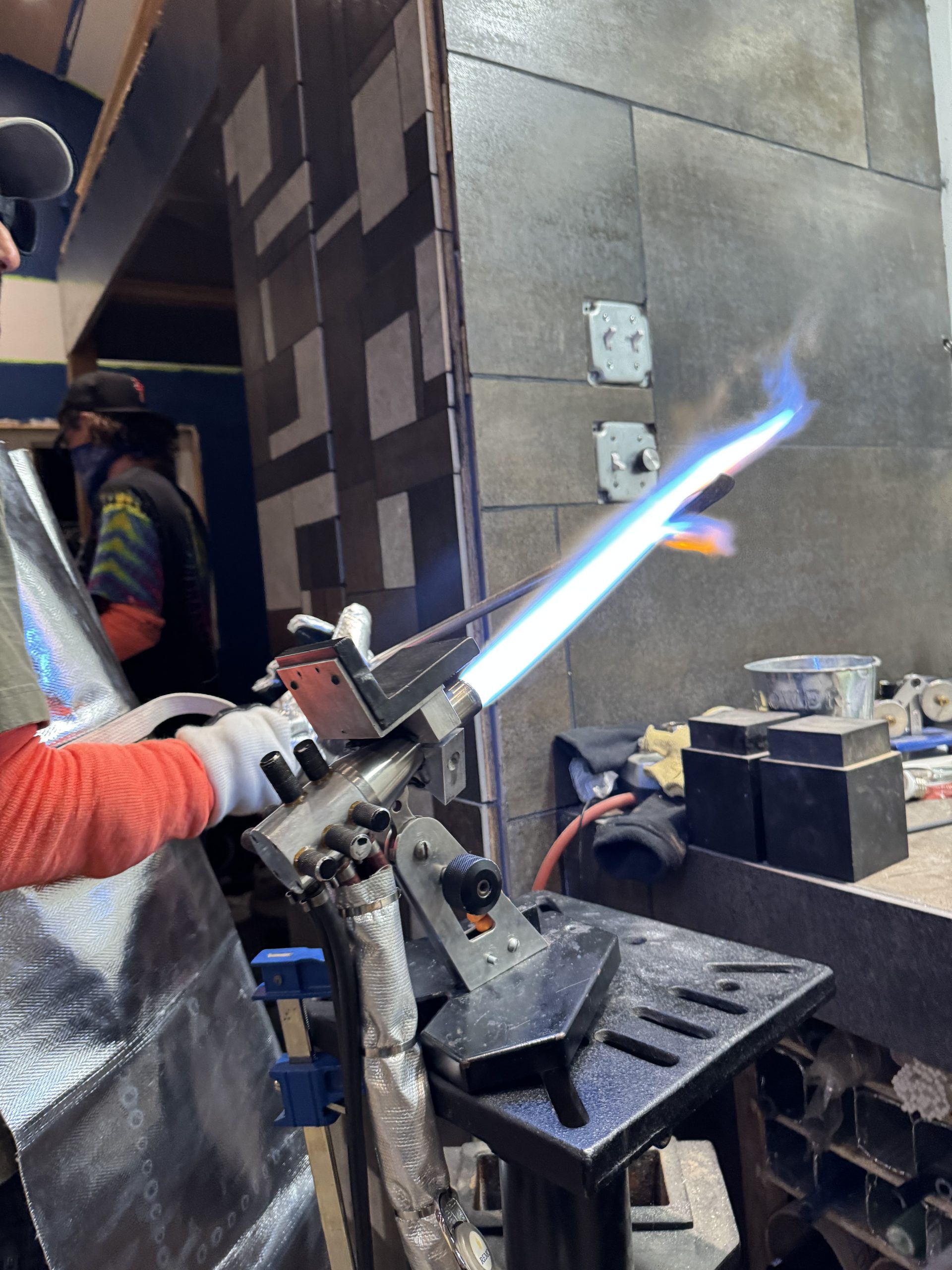Your cart is currently empty!
How Much Oxygen Do You Use as a Glass Artist?

Whether you’re melting soft glass into delicate beads or crafting heavy borosilicate pipes, knowing your daily oxygen consumption is critical. It affects your bottom line, informs studio setup decisions, and helps you avoid mid-project surprises. This guide breaks down typical oxygen usage for both soft glass and borosilicate artists, so you can plan with confidence. If you’re ready to crunch numbers, check out the interactive tool below:
Torch Types and Typical Oxygen Flow Rates
Your oxygen usage depends largely on the type of glass you’re working with and the torch you use.
Soft Glass Beadmaking (Low Oxygen Demand)
Used for: beads, pendants, small ornaments
Common torches: Nortel Minor, Bethlehem Bravo, GTT Lynx, National 8M
| Flame Size | Flow Rate (LPM) |
| Fine detail / stringer | 2–4 LPM |
| Standard beadmaking | 5–7 LPM (avg: 6) |
| Larger beads/small sculpts | 8–12 LPM |
Borosilicate Work (High Oxygen Demand)
Used for: pipes, marbles, large tubes
Common torches: GTT Phantom, Carlisle CC, Nortel Red Max
| Flame Size | Flow Rate (LPM) |
| Detail work | 5–10 LPM |
| Medium tubing/marbles | 15–25 LPM (avg: 25) |
| Large tubing/seals | 30–50+ LPM |
Daily Burn Time: Realistic Studio Usage
Even in a long studio day, your torch won’t run nonstop. Artists often break up their time with prep work, annealing, cleaning, and rest.
| Artist Type | Avg Torch Time per Day |
| Soft Glass Beadmaker | ~4 hours (240 minutes) |
| Borosilicate Artist | ~5 hours (300 minutes) |
Oxygen Usage Estimates
Soft Glass Example
- Flow rate: 6 LPM
- Torch time: 4 hours
- Daily oxygen use:
6 LPM × 240 min = 1,440 liters = ~50.9 cubic feet
A standard K-size cylinder (244 cf) lasts ~4–5 days at this rate.
Borosilicate Example
- Flow rate: 25 LPM
- Torch time: 5 hours
- Daily oxygen use:
25 LPM × 300 min = 7,500 liters = ~265 cubic feet
A single K-cylinder may not cover a full day. Many boro artists use oxygen concentrators or LOX dewars for this reason.
Tips to Optimize Oxygen Efficiency
- Use the right flame for the job – Don’t over-flame. Most tasks can be done with a smaller, more efficient flame.
- Run a neutral or slightly reducing flame – Oxidizing flames burn more oxygen.
- Turn off your torch during breaks – Idle flames = wasted fuel.
- Use a flowmeter – Track actual usage and spot inefficiencies.
- Batch your work – Group prep tasks to minimize high-flame time.
- Invest in an oxygen generator – Especially useful for high-consumption setups.
Summary Table
| Factor | Soft Glass Beadmaking | Borosilicate Pipework |
| Typical Flame Rate | ~6 LPM | ~25 LPM |
| Torch Time per Day | ~4 hours | ~5 hours |
| Daily O₂ Consumption | ~1,440 L / 50.9 cf | ~7,500 L / 265 cf |
| Tank Use Estimate | 1 K-tank = ~4–5 days | 1 K-tank = <1 day |
Understanding your oxygen usage isn’t just about numbers—it’s about creating a safer, more efficient, and more cost-effective studio. Whether you’re just starting out or refining a pro setup, estimating your oxygen footprint is the first step toward better planning.
Leave a Reply